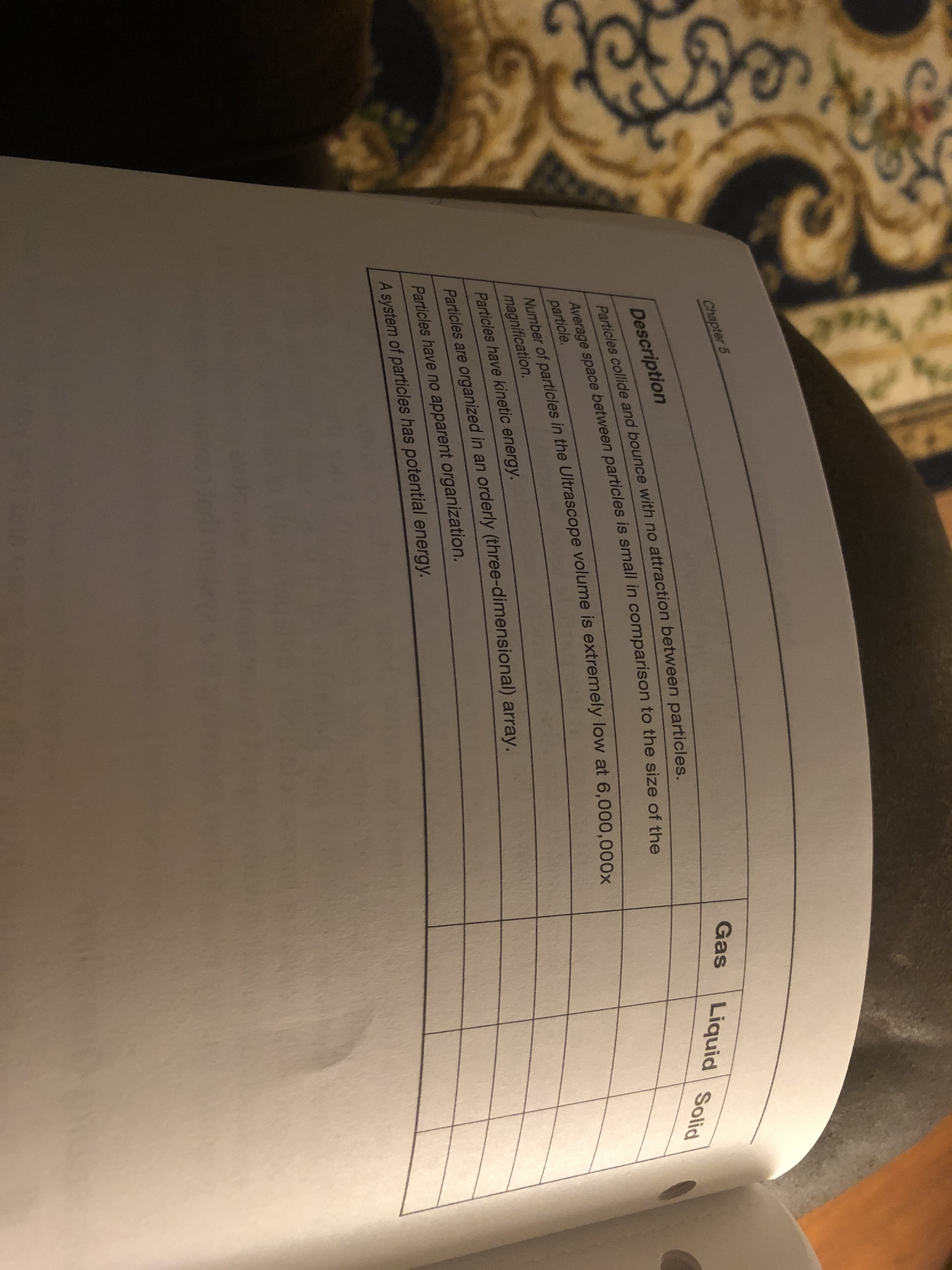us. Leave space the whole class discusses S1: Use check marks in the table below to distinguish which descriptions apply to each physical state (gas, liquid, and solid). Description Gas Particles are in constant motion. Liquid Solid Certicles are separated by empty space. Particles constantly vibrate in place as their primary form of motion. Average space between particles is very large in comparison to the size of the particle There is some attraction between particles in close proximity. Paricles collide with some attraction between particles. Asystem of particles has potential energy. ysical Science & Everyday Thinking Chapter 5 Description Gas Particles collide and bounce with no attraction between particles. Average space between particles is small in comparison to the size of the Number of particles in the Ultrascope volume is extremely low at 6,000,000x Liquid Solid particle magnification Particles have kinetic energy. Particles are organized in an orderly (three-dimensional) array. Particles have no apparent organization. A system of particles has potential energy.
Latent heat and phase change
A physical process in which a conversion among the basic states or phases of matter, i.e., solid, liquid, and gas takes place under the effect of a certain temperature and pressure is referred to as a phase change. Generally, the phase change of a substance occurs when heat transfer takes place between the substance and its surroundings. Based on the direction in which heat transfer takes place, different types of phase changes can occur.
Triple Point of Water
The branch of physics in which observer deals with temperature related properties is called thermodynamics.
Boiling Point of Water
Everyday examples of boiling is, boiling milk, heating water. One would have observed that when we heat water it goes through various stages and at one point bubbles show in water, and water keeps splashing with bubbles bursting, we in layman terms say that water is boiling.
Freezing Point of Water
In general, the freezing point of water is 0° Celsius, or 32° Fahrenheit. This is the temperature at which water will ordinarily change from its liquid state to its solid state (ice). However, there are certain conditions that can affect the freezing point of water. For example, a liquid may be supercooled or contain impurities so that it does not freeze at the ordinary freezing point.
Use check marks in the tablet below to distinguish which description applying to each physical state(gas, liquid, and solid).


Trending now
This is a popular solution!
Step by step
Solved in 1 steps






